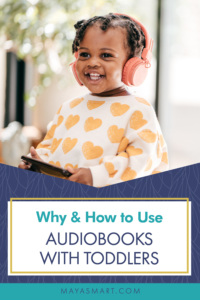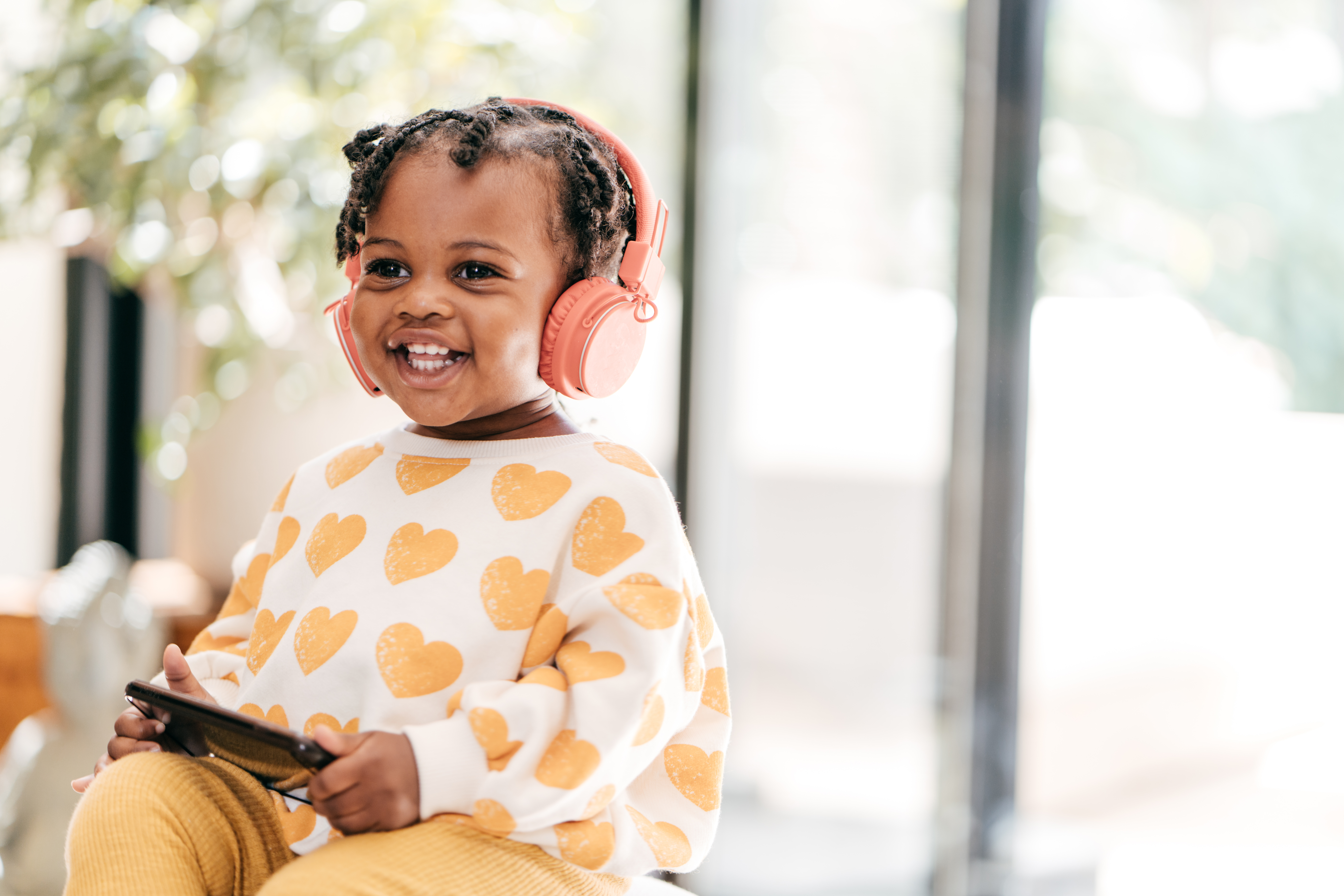By Andrea Hunt
The idea of recorded stories is not a recent one. In fact, in 1877 Thomas Edison recorded what we could think of as the first partial audiobook on his new invention, the phonograph—a machine he dreamed would help bring storytelling into every home. His choice of material? One for the toddlers: the nursery rhyme Mary Had a Little Lamb.
But it wasn’t until more recent decades and technological advances that audio stories truly took off, gradually with books on tape and MP3s, then exponentially with smart devices and speakers. Today, their remarkable popularity shows no signs of waning, and the kids’ segment of the audiobook market is the segment predicted to grow most rapidly over the coming years.
And with good reason: Parents value kids’ audio stories for keeping children entertained, helping them fall asleep at night or naptime, and helping active little ones settle down and sit still for a spell. Plus—while audiobooks shouldn’t replace hard copies or shared reading between parents and children—their value in boosting literacy and helping kids build a love of reading is increasingly recognized.
The benefits of using kids’ audio stories to support literacy
According to a literature review exploring their role in supporting children’s literacy, audiobooks can boost key skills, such as:
- Language comprehension
- Word recognition
- Vocabulary
- Pronunciation
They’re also rewarding in other literacy-relevant areas, sparking a love of stories and motivation to read, enhancing wellbeing, and boosting emotional intelligence and imagination.
While most of the research to date has focused on the benefits of audiobooks for older children, even very young readers and listeners should be able to learn from them. So, if you haven’t tried using them with your toddler, and want to complement your reading activities, there’s no better time than now to press play. Here’s how to use them for maximum benefit.
How to Use Toddler Audio Stories at Home and Beyond
One of the appeals of audiobooks is how easily you can incorporate them into everyday family life and routines. Yes, they’re handy for car journeys or longer trips. But you can also build them into mealtimes, bath times, and bedtimes, not to mention use them as a (much-needed) alternative to screen time.
Parents and caregivers can even still take part in story time while performing other tasks by listening in with their child. Preparing dinner with a squirmy kid around? Set them up with an audiobook in the kitchen with you. It shouldn’t replace shared reading from a physical book, which is crucial for building print awareness, but you can still engage with your child around the story, asking and answering questions or chatting about the plot—which is also critically important.
For parents with toddlers going through a less enthusiastic phase when it comes to reading, or who may be having a hard time sitting to look at books, audiobooks can also be a useful way to keep up their exposure to stories and children’s literature.
From trying and testing audio stories with my own daughter, I found it can take a little time for a toddler to get interested in them. After all, toddlers aren’t yet reading and still rely heavily on the pictures in a book to engage them and help them follow a story. So, try starting out with stories they know and love already, ideally paired with a book they can look at and follow while listening.
Also seek out short audiobooks that won’t tax a limited attention span. Stories with musical elements, sound effects or child narration can be big hits. Another fun idea is to give them toy figures or storytelling puppets, so they have an activity to occupy busy hands, help hold their focus, and kindle their imagination as they listen.
Where to Find Audio Stories for Toddlers
If you’re ready to try audiobooks with your toddler, the quality of many of today’s choices is impressive. Take a look at the winners and finalists of the Audio Publishers Association Audie Awards or the yearly list of notable children’s recordings from the Association for Library Service to Children to get started with some great titles.
Here are tips for where to find engaging audiobook titles and audio stories:
- Check out your local public library for read-along book and CD sets, or audiobooks pre-loaded onto MP3 players.
- Check your library’s website for audiobooks to download onto your smart device. Other online libraries may also allow you to download digital content online.
- When shopping for books, keep a lookout for publishers that include an audiobook—CD or QR code—as part of their offering. Or look for titles that have been recorded as audio stories since publication. You can read the story with your toddler first, knowing that you can introduce the audiobook version once they’re more familiar with it.
- Browse audiobook apps or apps with audio story content—music streaming services often include stories. There are numerous podcasts with read-alouds or original stories for kids.
- Consider borrowing or investing in an interactive kids’ story player that allows children to choose and play audiobooks or stream storytelling radio shows. These can be a fantastic alternative to letting toddlers listen to audiobooks on a tablet or phone, where the temptation to stray into videos or games is all too present.
- Get creative and record your own audio stories. You could read your toddler’s favorite, so they can hear it over and over again, or invent a new tale. This is a lovely way for grandparents and relatives to get involved, too!
Pin me for reference



